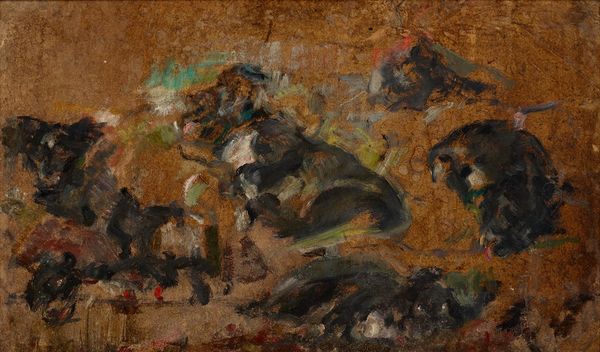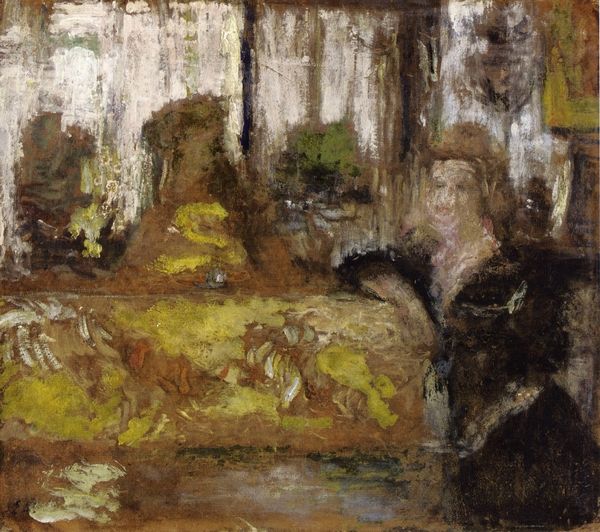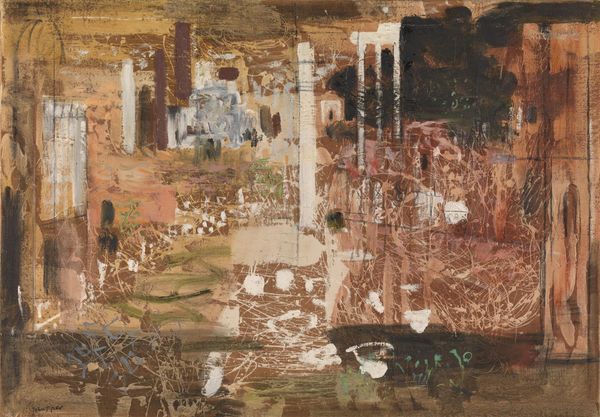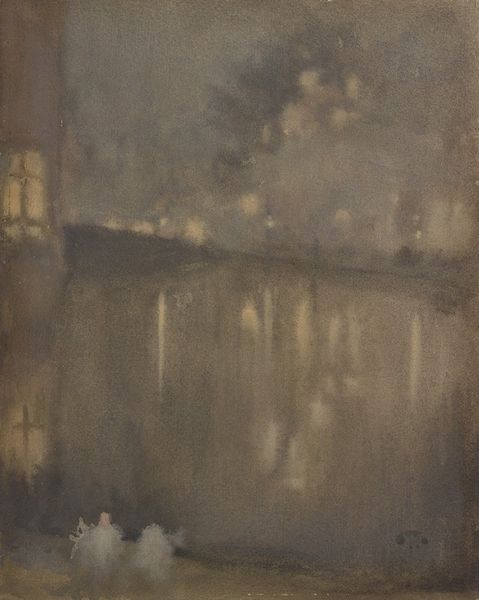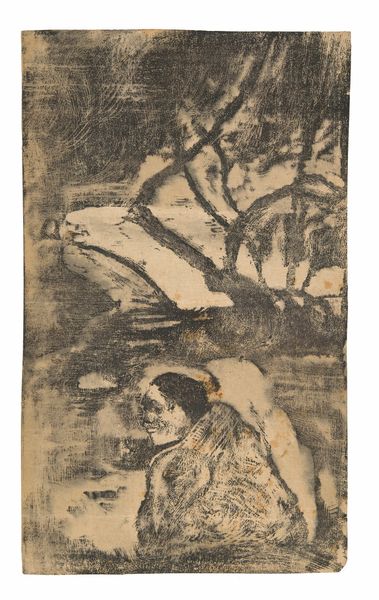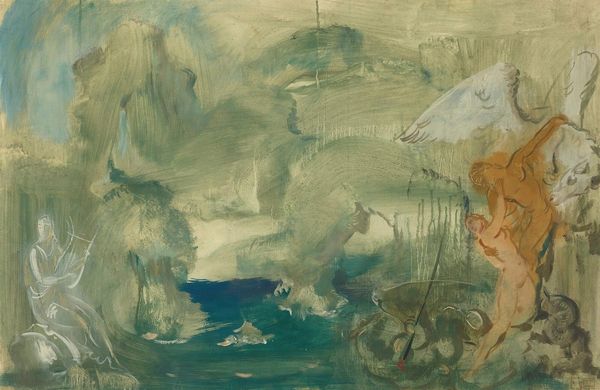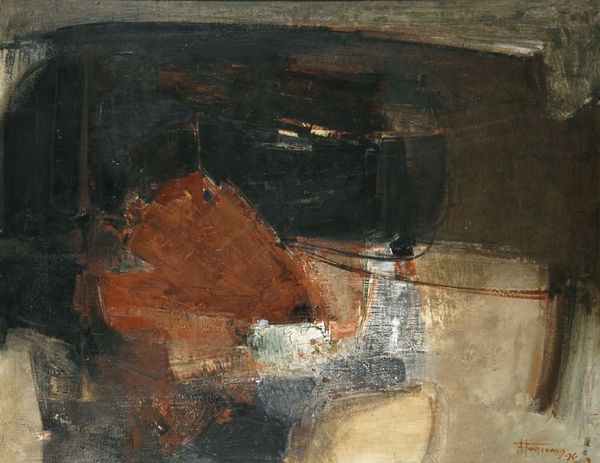
painting, oil-paint, impasto
#
portrait
#
painting
#
impressionism
#
oil-paint
#
landscape
#
figuration
#
oil painting
#
impasto
#
cityscape
#
genre-painting
#
modernism
Dimensions: support: 12.7 x 21.9 cm (5 x 8 5/8 in.) overall (support and wooden collar): 14 x 22.8 cm (5 1/2 x 9 in.)
Copyright: National Gallery of Art: CC0 1.0
Curator: Looking at this striking piece from around 1883, entitled "The Loge," it’s by Edgar Degas, rendered with oil paints. What immediately comes to mind for you? Editor: An echo, I think. It feels like eavesdropping, catching whispers in velvet. You get the sense that we are intruding in this space, spying glances. Curator: Indeed. The setting is critical here. Degas presents us with a slice of Parisian bourgeois culture—specifically, the experience of attending the theatre. What’s fascinating is the depiction of spectatorship itself as a form of display and social performance. Look at the use of impasto – how it enriches the textured details. Editor: And yet there’s such an intimacy, almost discomfort. It is like Degas captured more than they bargained for when buying that opera ticket. The brushstrokes feel frantic, conveying not only how things appear, but the emotional charge of *being* in the theatre. Do you think it comments on how art both reproduces reality, and also, invents it? Curator: That's a sharp observation. I'd say the figures hint at that interplay—their positions reflecting on class and gender dynamics inherent to the spectacle. Consider also, from a purely material perspective, how the ready availability of paint impacted artists of the time to be able to pursue studies of modernity and movement like this one. The industrial revolution seeps in. Editor: Industrialisation made operas cheaper too, remember? Art is reflecting new consumer products and new economies around enjoying art. And on a human level: the quickness with which these plays emerged and died makes its mark – just look at that pale dancer! This whole setting may, for Degas, represent something fading fast. I can imagine a sense of personal loss seeping in. Curator: A melancholy loge, indeed. So much about Impressionism reveals shifts in not just what's depicted, but also, how things get made, bought and felt. Thanks for lending a great insight into the era. Editor: My pleasure. I leave feeling somewhat wistful. See how a seemingly casual opera view shows a complex world, constantly staging, playing, performing and dying around us? Maybe there are better dramas off stage, after all.
Comments
No comments
Be the first to comment and join the conversation on the ultimate creative platform.

